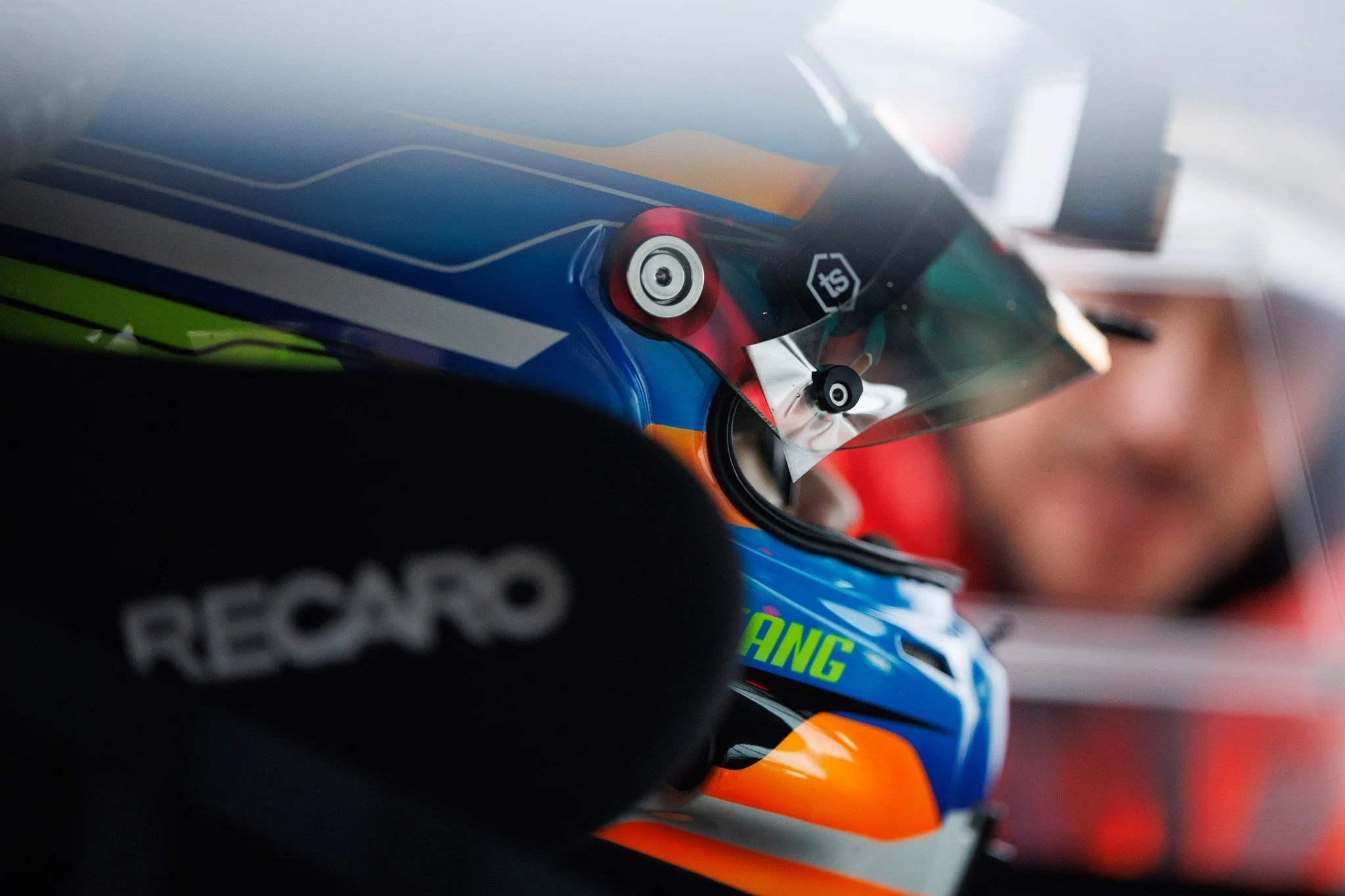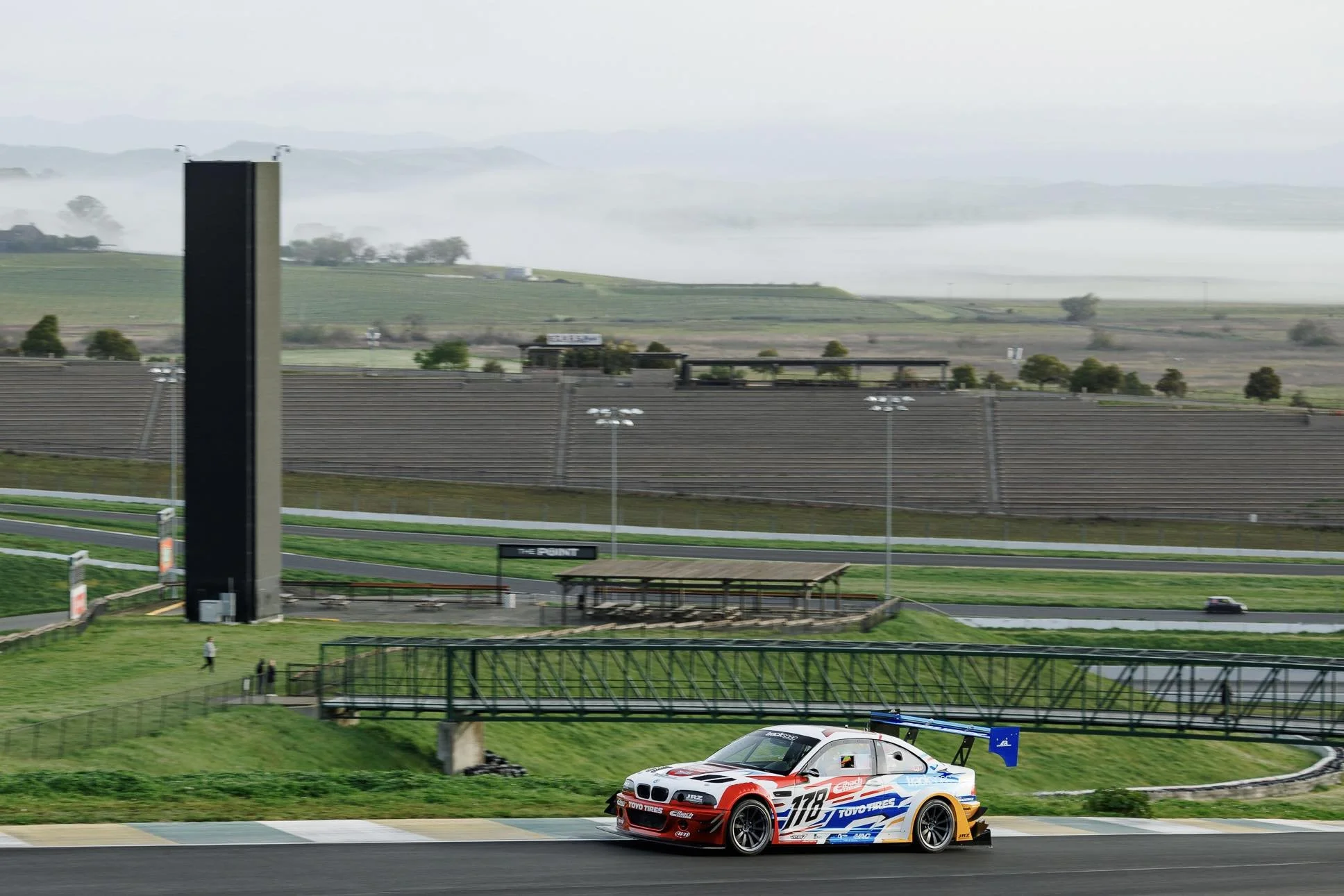Tom Tang’s M3: Race to the Clouds
Over two decades in the motorsports industry have been good to Tom Tang, who started off as a humble motorsports photographer with a knack for networking and a penchant for taking big trips. “When I was in college, I ended up going to Japan with some friends. We were big Honda fanboys – we loved the JDM tuning scene.
On that trip, we realized the more niche tuning companies had little representation here. Spoon Sports had a following here in the states, but J’s Racing less so. We got this wild idea to start selling new J’s parts to the Honda community back home, along with used JDM parts. A couple years later, in 2007, when Super Street magazine hosted Super Lap Battle at Buttonwillow Raceway, we got invited and worked with J’s Racing to debut their RHD time attack S2000 at the event.
Afterwards, J’s built another lightweight AP1 S2000 and shipped it stateside to further drum up interest in their products and in the brand. This was when I fell in love with the S2000 platform,” he reminisced.
Love may be an understatement. Once Tom picked up one for himself, he did 30 DEs that first year. As he began upgrading the car, he called on some of his contacts who were willing to help jump onto the program. This led to competitive time trials, time attack, and later wheel-to-wheel, where he found a class that suited both him and the car.
In his chosen NASA class, the S2000’s qualifying times were similar to those of the dominant BMWs, but the Bimmers’ larger engines and greater torque made them quicker in a race setting. With help from a few friends, Tom decided to add a couple cylinders to his S2000 and installed a 3.2-liter V6 from a CL in the car and continued racing.
Eventually, Tom recognized that the proven platform was the BMW E36 or E46, so he bought a race-built example of the former generation. After winning many times over, this car was sadly totaled in the hands of his teammate, which is when Tom decided to try the newer chassis.
This became a successful endurance car built strong and heavier to withstand races like the 25 Hours of Thunderhill. A couple years of success in the long-distance races were thrilling, but once that box had been checked, Tom started considering another discipline in a wildly different setting.
With his sights set on America’s greatest hillclimb, he began turning his endurance car into a time attack machine. “The two have very different build ethoses. I began by stripping the car down to the bare chassis, since weight is paramount. For an enduro, we wanted a tougher, heavier car with metal doors, but for one ten-minute run at Pikes Peak, I needed to trim as much weight out of it as possible,” he said.
Along with reducing weight, Tom sought to increase power and downforce as much as possible. Finally, after years of being constrained by the rulebook, he would now only be constrained by his checkbook.
To trim some heft, he scrapped much of the standard body for carbon replacements. “I linked up with Dominic Flossman of Flossman Motorsport, who’d built lots of the carbon parts for E46 race cars. We decided on the E46 GTR CSL kit, plus a few goodies that he’d never made before specific to Pikes Peak since we weren’t restrained.
In addition to taking nearly 200 pounds of weight out of the car, he was able to accommodate a much wider track and a substantially larger footprint. Underneath the blistered fenders are a set of 18X11” and 18X12” Titan 7 TP10 wheels. These rollers are wrapped in 285 and 305-section Toyo prototype slicks, specifically designed for Pikes Peak.
To suit the wider track, Tom decided on a trick suspension. Among these pieces are arms from MRT Engineering out of Finland – basically a copy of BMW factory-team M3 GTR arms. These fortified arms have anti-dive, anti-squat, and adjustable track length designed into them. They also make it possible to run a quicker steering ratio – good for first-gear hairpins.
In addition to the trick suspension, Tom recently installed Bosch adjustable motorsports ABS.
With the mechanical grip improved, Tom turned his attention to the aerodynamics. He chassis- mounted a huge APR GT-1000 wing, as well as a front wing mounted atop the splitter to add more front-downforce without necessarily creating a larger splitter surface.
Of course, the moderately powerful S54, as fine as it is for road racing in a closely regulated category, needed something extra to get to the top of a 14,115’ foot mountain quickly.
“The engine is a highly strung S54 built by Steeldust Machine – one of the most meticulous engine builders I’ve ever met. The bottom end is blueprinted, sleeved, with custom CP Carillo pistons. The head has a ton of work with a Supertech valvetrain and other VAC Motorsport goodies,” Tom described.
When it came to seeking power, he sourced a one-off supercharger kit in partnership with Active Autowerke using a Rotrex blower C38-92. On Ignite Red 114 ethanol, it makes 600 horsepower at the wheels, and also utilizes a 100-shot of nitrous for even more performance at higher altitude.
“I spent a lot of years talking to veterans and learned that we needed more cooling across everything than we thought, which is why I went with a supercharger over a turbo. Turbos can compensate for altitude loss, but the turbo causes more heat. With air as thin as it is at the top, cooling is limited – and the S54 is already a motor that tends to run hot,” he explained.
This last climb marks Tom’s second time at Pikes Peak. Last year, he ran a 10:31 as a rookie with 530whp. “It goes to show you don’t need mega power – you just need to use the power you have available.
Efficient use of the motor comes courtesy of a six-speed Drenth sequential. Interestingly, he’s decided to not run paddles in the name of simplicity. It’s an ordeal just getting to the start of the race, and minimizing the number of moving parts is one way to improve one’s chance of finishing.
Pikes Peak is like three different race tracks in one. The first third is like a road course: fast, smooth, and flowing. Yes, it’s lined with trees, but the dropoffs aren’t so bad. The middle section is like a rally circuit: medium average speed due to long straights with lots of hairpins. Not only does this test the tractive capabilities of the car, but it’s the steepest section and so lots of power is necessary to excel here. Essentially, it’s a drag race between hairpins. The final third is like an offroad track, but fast at the same time; so bumpy it’s hard to put the power down.
These stages are so different that they really warrant having separate suspension setups, which his suspension sponsor made possible with an ingenious solution.
“I run a JRZ 4-way motorsport active damper that runs at 120 hz. Each damper has its own computer onboard with accelerometers and gyroscope inside, and so it can automatically adjust on the fly. I mapped the mountain last year with JRZ’s cofounder, and we put together multiple damper modes I toggle through as I run up the mountain. In the lower third, the car is stiff, in the upper section it’s compliant with a little less rebound, and that setup allows me to stay in the power in the traction zones. We actually have dampers on the camera front and rear. I debuted these dampers now available to the public.
With the chassis better sorted and another 70 horsepower at his disposal, Tom returned to Pikes Peak this year and finished P6 in the Unlimited Class. up from P7 last year; 11th overall out of 73 Competitors, up from 17th Overall last year; as well as being the fastest BMW at the mountain and the fastest production car at the event.
Though this year’s event was cut short due to strong winds at the top, Tom’s performance indicated just how far the car has come in a short time. With some luck, he’ll be able to demonstrate the car’s potential along the entire 12.42-mile course next year.
This once modest M3 now has more money in it than a Porsche Cup Car, and the potential it’s demonstrated should encourage any aspiring tuner with contacts and funding to try making theirs into a dedicated time attack machine if they’re so inclined. The robust chassis, the wide range of aftermarket support, and the forgiving nature of the car make the E46 a platform that’s hard to argue with.






